SLLS163F July 1993 – April 2024 SN65LBC172 , SN75LBC172
PRODUCTION DATA
- 1
- 1 Features
- 2 Applications
- 3 Description
- 4 Pin Configuration and Functions
- 5 Specifications
- 6 Parameter Measurement Information
- 7 Detailed Description
- 8 Device and Documentation Support
- 9 Revision History
- 10Mechanical, Packaging, and Orderable Information
Package Options
Refer to the PDF data sheet for device specific package drawings
Mechanical Data (Package|Pins)
- N|16
- DW|20
Thermal pad, mechanical data (Package|Pins)
Orderable Information
5.7 Typical Characteristics
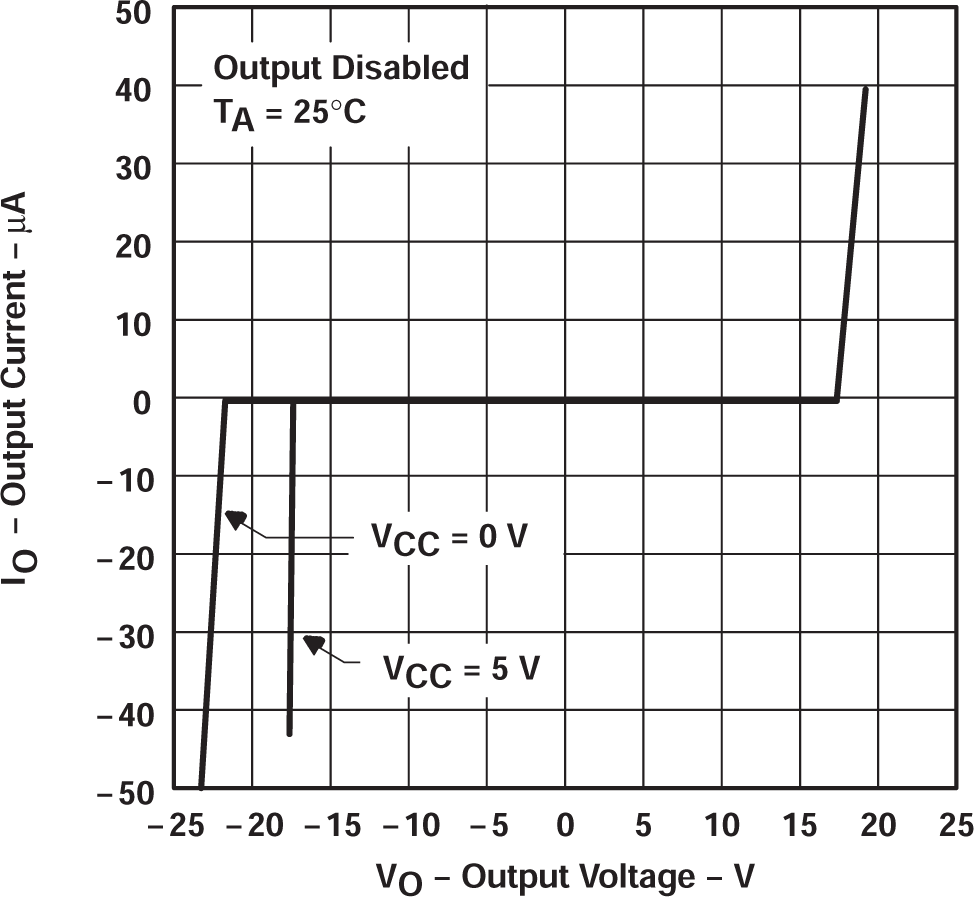 Figure 5-1 Output Current vs Output
Voltage
Figure 5-1 Output Current vs Output
Voltage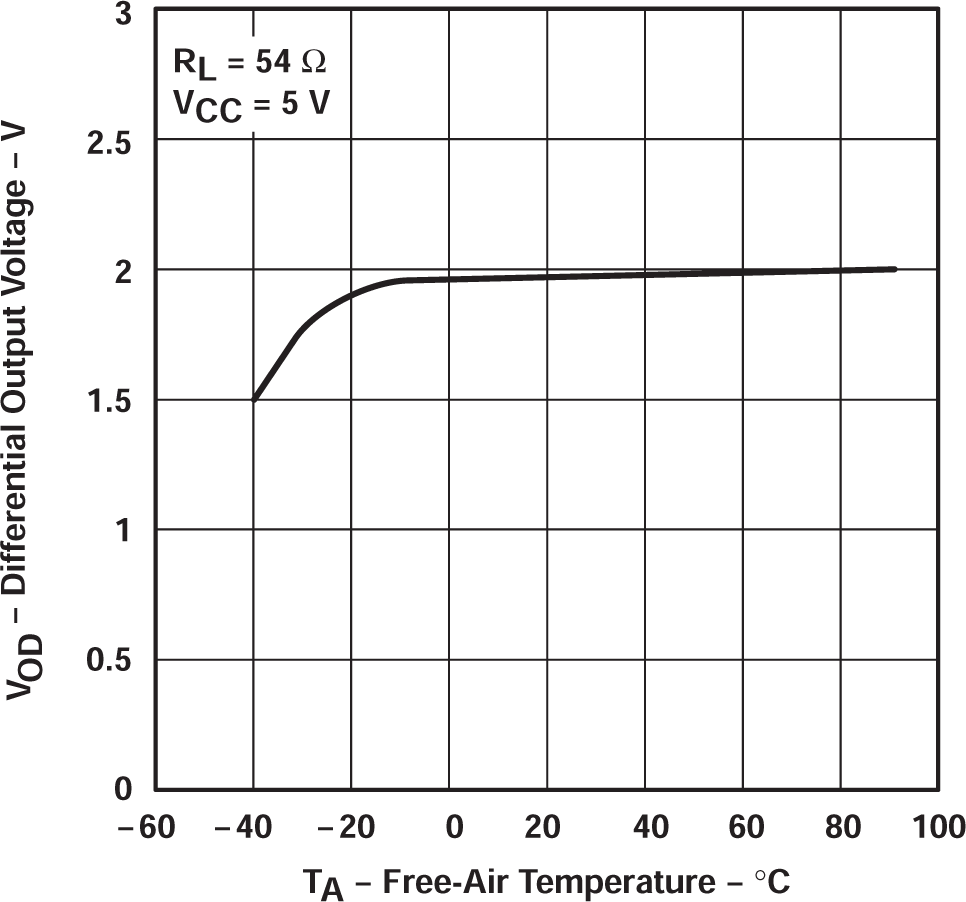 Figure 5-3 Differential Output
Voltage vs Free-air Temperature
Figure 5-3 Differential Output
Voltage vs Free-air Temperature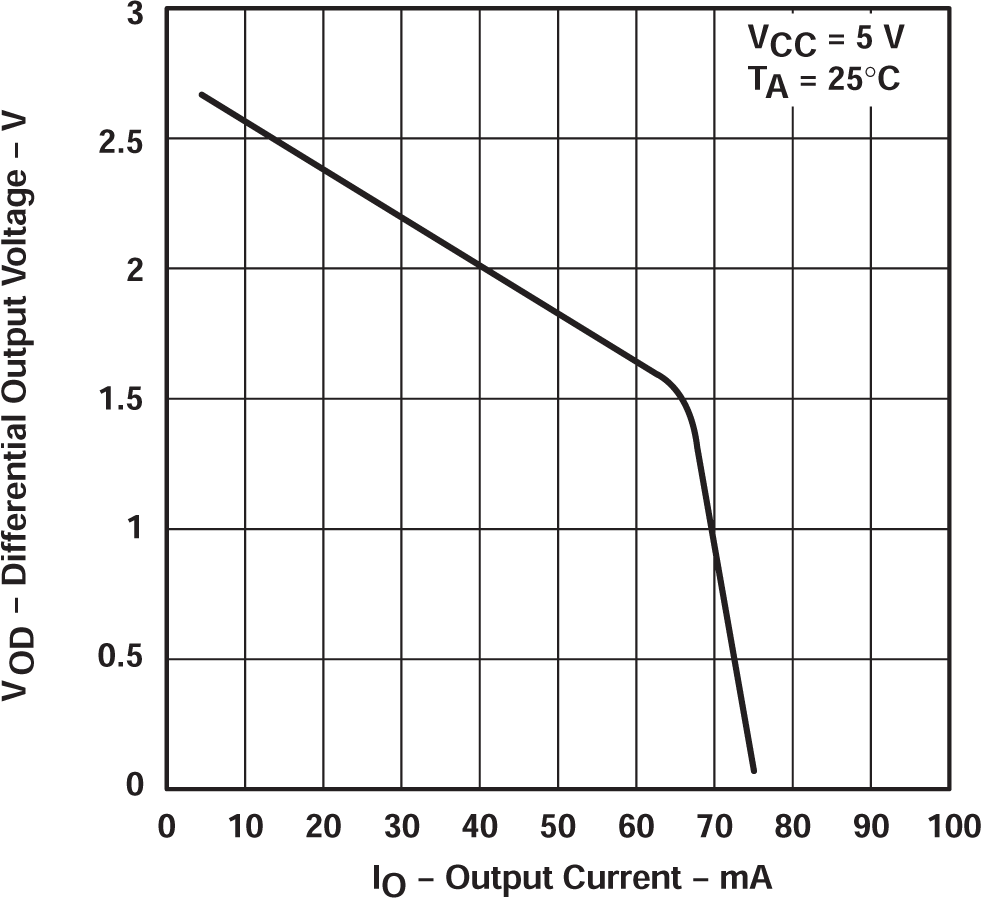 Figure 5-5 Differential Output
Voltage vs Output Current
Figure 5-5 Differential Output
Voltage vs Output Current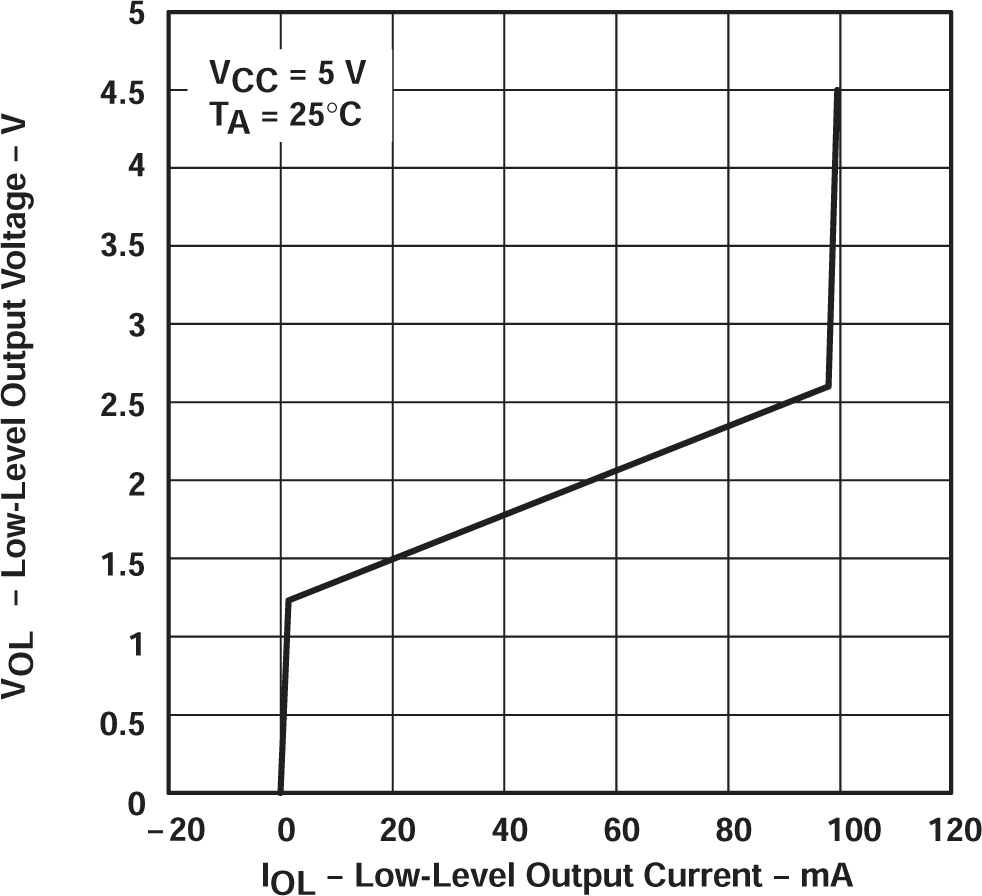 Figure 5-2 Low-level Output Voltage
vs Low-level Output Current
Figure 5-2 Low-level Output Voltage
vs Low-level Output Current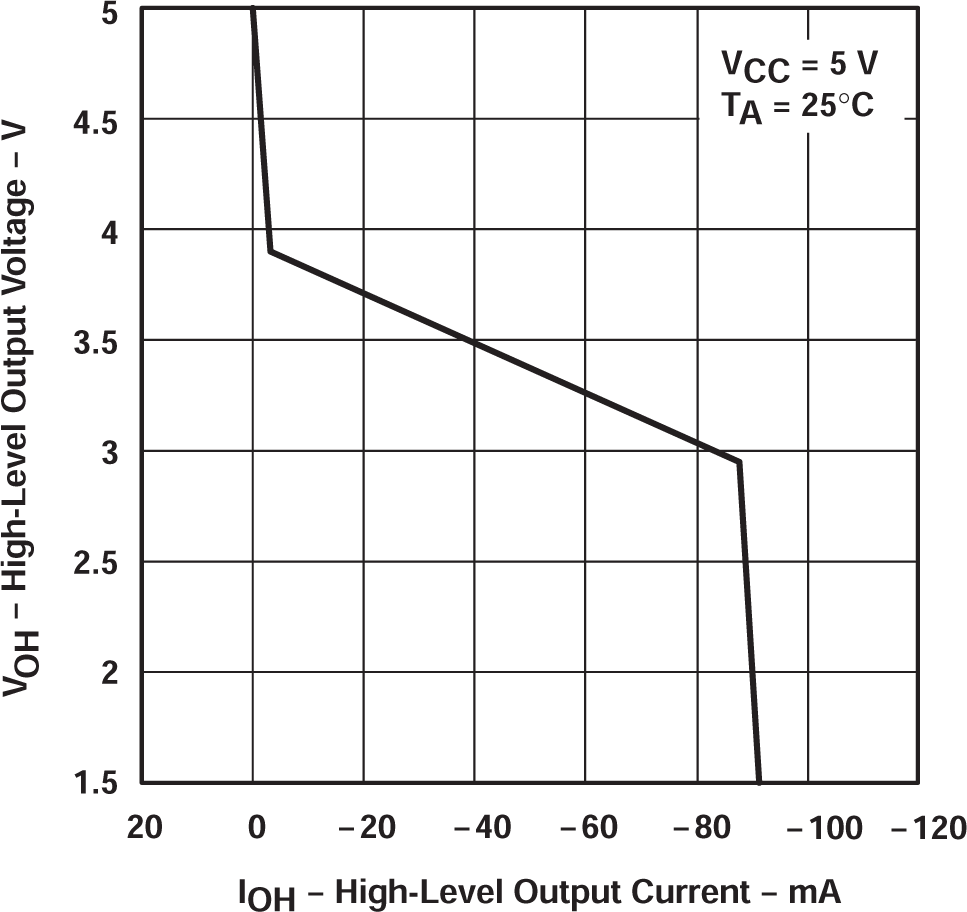 Figure 5-4 High-level Output Voltage
vs High-level Output Current
Figure 5-4 High-level Output Voltage
vs High-level Output Current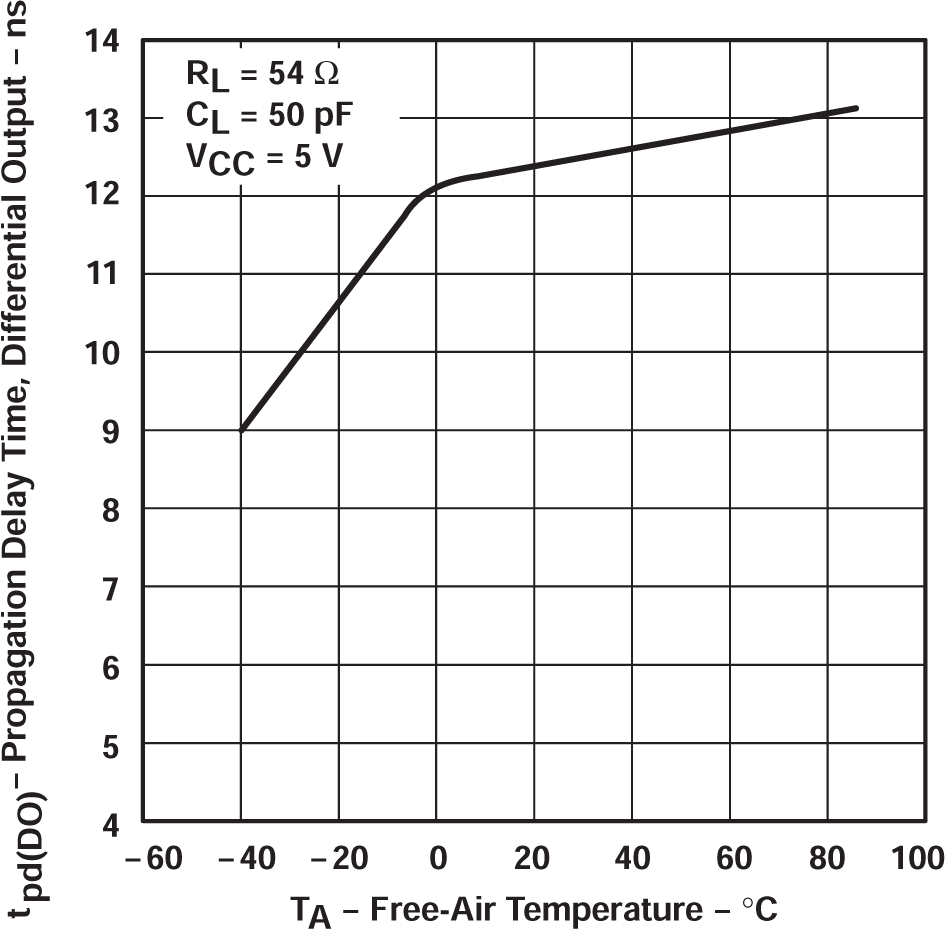 Figure 5-6 Propagation Delay Time,
Differential Output vs Free-air Temperature
Figure 5-6 Propagation Delay Time,
Differential Output vs Free-air Temperature